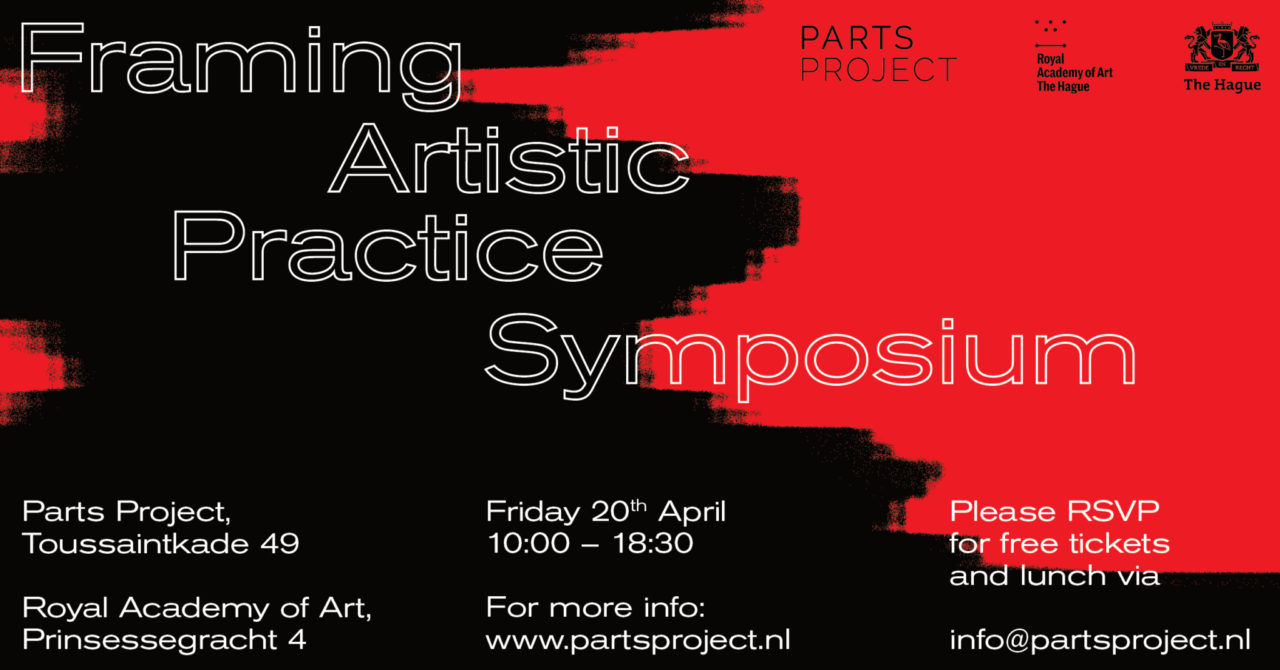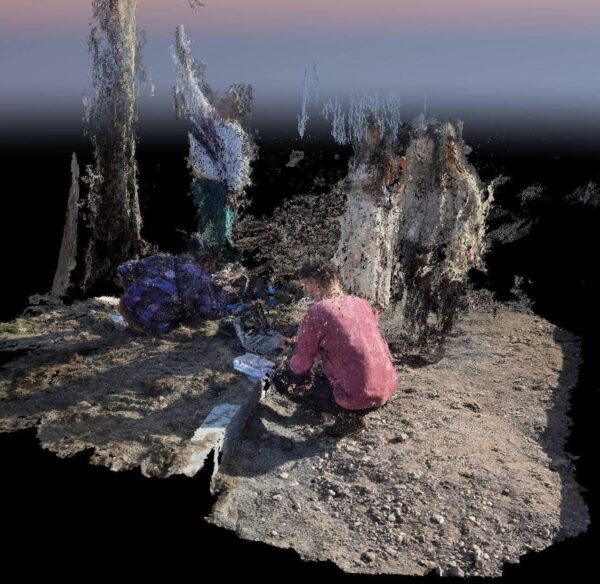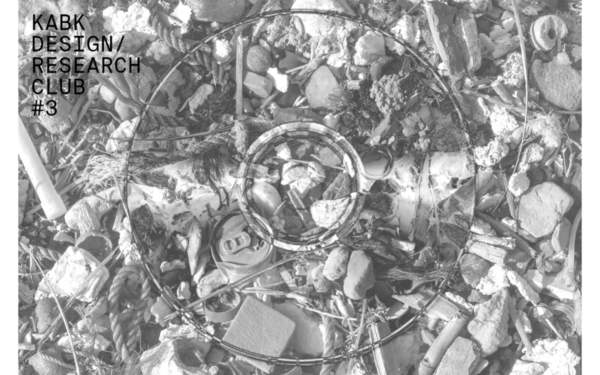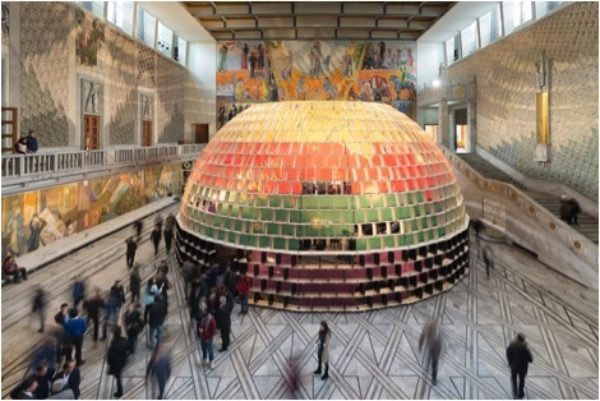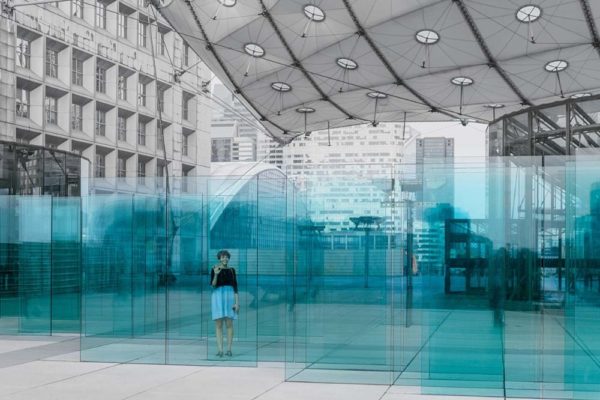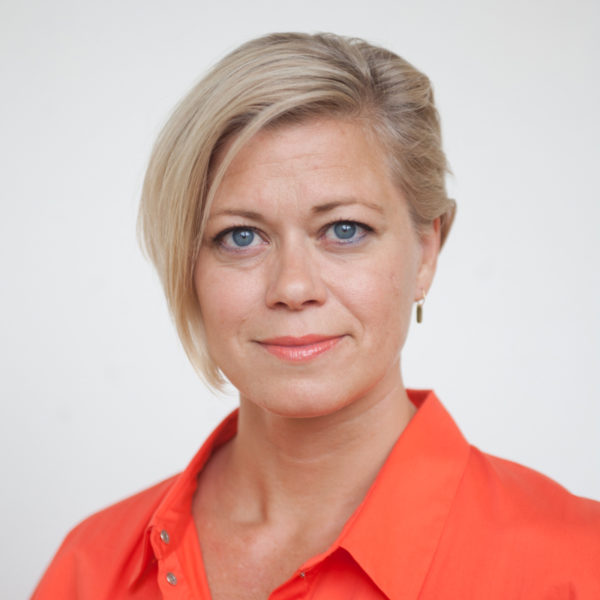On Friday 20th of April, Parts Project is organising the symposium titled ‘Framing Artistic Practice’ in collaboration with the Lectorate Art Theory & Practice of the Royal Academy of Art, The Hague. The symposium accompanies the exhibition ‘Personal Pop’ and takes the case of the Bangladeshi-British artist Shah Jahan Miah (b. 1976 in Bangladesh – d. 2015 UK) as a lens to address topical questions such as:
- What relationships can be imagined between personal and artistic freedom on the one hand and social engagement and responsibility on the other?
- How can an artist navigate between a multiplicity of identities, e.g. gender, psychological, political, spiritual and cultural?
- What are the pros and cons of explicit (art) historical references in one’s practice? How do artists write themselves into histories of art?
The day will start at the exhibition venue (Parts Project) with short introductions into various aspects of Shah Jahan’s life and work. The afternoon programme at the Royal Academy of Art is structured around his main sources of inspiration, which will in their turn provide the starting point to discuss broader themes. Together, we will reflect on different ways of interpreting and framing artistic practice and production.
Afternoon programme - sessions
13:25-14:00 Talk by Shelley Sacks, social sculpture practitioner, followed by Q & A (via Skype)
14:00-14:30 Workshop I moderated by Ludmila Rodrigues, Royal Academy of Art
“Everyone is an artist. Everyone possesses creative faculties that must be identified and developed.”
Shah Jahan was well acquainted with the work of other artists, both historical and contemporary. One of the most important historical figures for Shah was Joseph Beuys. He showed particular interest in ‘everyone is an artist’, ‘social sculpture’ and ‘Energy Plan for Western Man’ and intended to build these ideas as became apparent in his application to De Ateliers with the title ‘Energy Plan for Western Man Exhausted?’.
Beuys also was a source of inspiration for many other artists working against the logics of modernism at the time. In this session we will begin by exploring the meaning of these particular concepts and their relevance for today’s artistic practice – with a focus on artistic research and social sculpture. Shelley Sacks – who has spent many years working with such concepts and developing interdisciplinary ‘connective practices’ – will look at the importance of art education in enabling us to work from what Beuys described as ‘inner necessity’ and with the ‘invisible materials’ of speech, discussion and thought. In addition to this approach that is an antidote to getting lost in the work of others, she will outline her perspective on the significant differences between social commentary, art and activism, socially engaged art practice and contemporary social sculpture.
Speaker SHELLEY SACKS is a social sculpture practitioner, cultural activist and researcher-teacher-writer. Like her teacher Joseph Beuys, with whom she collaborated for many years, she is interested in exploring what Beuys’ statement ‘every human being is an artist’ means, and how understanding this can help us in shaping a humane and ecological society. Shelley sees her long-term projects like Exchange Values, University of the Trees: Lab for New Knowledge and an Eco-Social Future and Earth Forum as ‘instruments of consciousness’ for mind-shift work and reconfiguring our relationship to the world. She is Professor in Social Sculpture and Connective Practice and Director of the Social Sculpture Research Unit at Oxford Brookes University, Oxford, UK.
Workshop moderated by LUDMILA RODRIGUES, artist, designer, researcher and guest lecturer at the Royal Academy of Art The Hague. Some questions to kick-off exchange of thoughts:
- Joint exercise: how can we recognize Beuys’ spirit in Shah Jahan’s work? What is the relationship between this artist’s intentions and later interpretations based on experiencing his work?
- Does research into the work and ideas of other artists lead towards a greater sense of artistic freedom or does it (also) impose restrictions, and how?
- What relationships can be imagined between personal and artistic freedom on the one hand and social engagement and responsibility on the other?
- As social sculpture understands art as an interdisciplinary and participatory process and recognises all human beings as artists, what then is the role of professionally trained artists?
14:30-15:05 Talk by Mustafa Maluka, artist and cultural analyst, followed by Q & A
15:05-15:35 Workshop II moderated by Dominic van den Boogerd, De Ateliers
Shah Jahan was born in Bangladesh, grew up in a Muslim community in Birmingham, and has been educated in Oxford and Amsterdam. His visual language is rooted in western art history while the subject matter often is based on his Bengali family archive, photographs and films of private gatherings. His (early) work seems to oscillate between polarities, such as innocence and violence, like in Kinder + Eggs and Rebel with Gun, or sacred and profane, visible in a framed prayer rug and Spin, a dissection of a pornographic film. Shah lived both in everyday realities and imaginary worlds, which at times became confusingly entangled. Most prominent within the exhibition ‘Personal Pop’ is the series titled Pizza Boys, more than life-size painted self-portraits of Shah Jahan in disguise: a mix of a pizza delivery man and Michael Jackson incognito, who himself struggled with the colour of his skin. Whereas many artists prefer to distance their professional from their personal life, Shah made a conscious attempt to integrate the two.
Speaker MUSTAFA MALUKA is an artist and cultural analyst whose work theatrically confronts the intersection between contemporary critical theory and global politics. His large-scale portraits feature transnational, racially and sexually ambiguous characters balancing life between countries and cultures. Maluka’s paintings confront the viewer with the question of how a continuous self-hood persists across a context of rupture.
Workshop moderated by DOMINIC VAN DEN BOOGERD, art critic, art historian and director of De Ateliers. Suggested questions to kick-off exchange of thoughts:
- How can we see Shah Jahan’s personal life reflected in his work, e.g. in choosing his subject matter or in connecting to other artists?
- Is context of the person of the artist necessary for understanding the work?
- More in general, what are the challenges of developing an artistic identity?
- Especially in times of globalisation and bearing in mind asymmetrical historical relationships, under- as well as misrepresentation of artists with a mixed background: how can an artist navigate between a multiplicity of identities, e.g. gender, psychological, political, spiritual and cultural?
- To what extend can, or should, the professional work of art be separated from the persona of the artist?
16:00-16:35 Talk TBC, followed by Q & A
16:35-17:05 Workshop III moderated by Kitty Zijlmans, Leiden University
Shah’s fascination with popular culture could perhaps be linked to his upbringing and education in Britain, the birthplace of the European pop art movement. Shah was particularly inspired by the icon of pop art Andy Warhol, his modular painting techniques and modification of scale, and how he sought after alternatives to modernism’s formalism. His fascination with the pizza courier clearly exemplifies this. However, Shah never made multiples, and he aimed to personalise the ‘impersonal style’ of Warhol. In order to do so, Shah explicitly referenced his cultural background. He also gradually started to insert political statements in his work, something that Judith de Bruijn calls ‘political pop’. Can his work therefore perhaps also be framed in the wider context of ‘global pop art’, and if so, what does this entail? Can we view pop art in terms of a globalised movement as some exhibitions recently start to suggest?
Workshop moderated by KITTY ZIJLMANS, Professor of Contemporary Art History and Theory/World Art Studies, Leiden University. Some questions to kick-off exchange of thoughts:
- How does Shah’s work match and differ from the concepts and techniques of Andy Warhol? To what extend does the capability of an artist to verbalise his or her intentions contribute to the framing of the work?
- What are the pros and cons of explicit (art) historical references? How do artists write themselves into the histories of art? Do self-acclaimed relationships to predecessors contribute to the reception and framings of a body of work?
- What is the difference between pop art and political pop? Does a work with political content automatically become political?
- As American, British, Chinese, etc. pop art movements all share interest in local popular culture, when does one speak of pop art and when about global pop art?
- Should cultural references be limited to ‘one’s own’ culture? Are artists at times facing a double bind as a consequence of globalisation processes?
Programme starts at Parts Project
10:00-10:30 Registration and coffee/tea
10:30-10:35 Welcome
10:35-10:55 Josep Turro Bassols, friend and patron
10:55-11:15 Judith de Bruijn, art historian
11:15-11:25 Video message by Nathaniel Mellors, artist
11:25-11:40 Bert Frings, artist
11:40-11:45 Letter from Sara Sejin Chang van der Heide, artist
11:45-12:00 Q & A
12:00 Lunch at Parts Project & Travel to Royal Academy of Art
Programme continues at the Auditorium of the Royal Academy of Art, The Hague.
13:15-13:20 Introduction
SESSION I:
- 13:25-14:00 Talk by Shelley Sacks, social sculpture practitioner, followed by Q & A (via Skype)
- 14:00-14:30 Workshop I moderated by Ludmila Rodrigues, Royal Academy of Art
SESSION II:
- 14:30-15:05 Talk by Mustafa Maluka, artist and cultural analyst, followed by Q & A
- 15:05-15:35 Workshop II moderated by Dominic van den Boogerd, De Ateliers
15:35-16:00 Coffee/tea & Screening of video Shah Jahan
SESSION III:
- 16:00-16:35 Talk TBC, followed by Q & A
- 16:35-17:05 Workshop III moderated by Kitty Zijlmans, Leiden University
17:05-17:30 Student presentations in response to Call for Papers
17:30-18:00 Concluding panel discussion, amongst others: Rob Birza, artist, and Arno van Roosmalen, director Stroom
18:00-18:30 Drinks
Details
Date
Location
Auditorium, Royal Academy of Art, Prinsessegracht 4, The Hague (afternoon programme)
